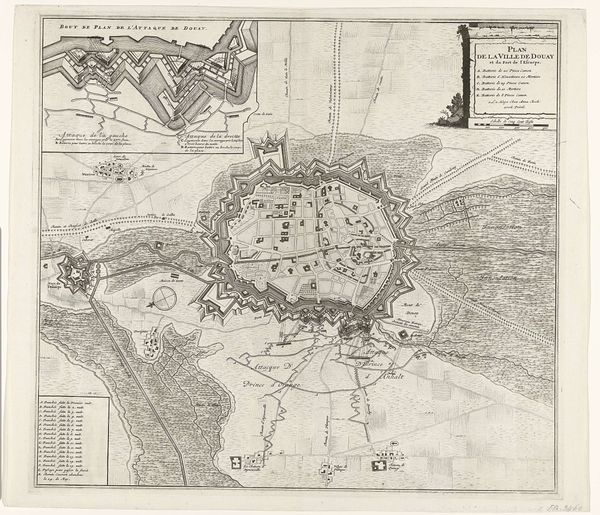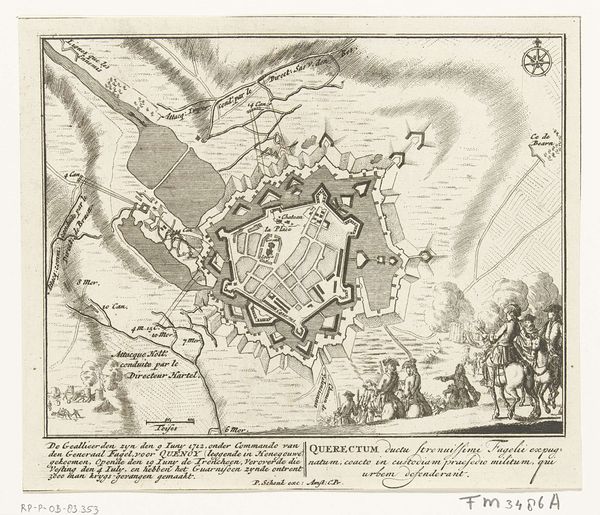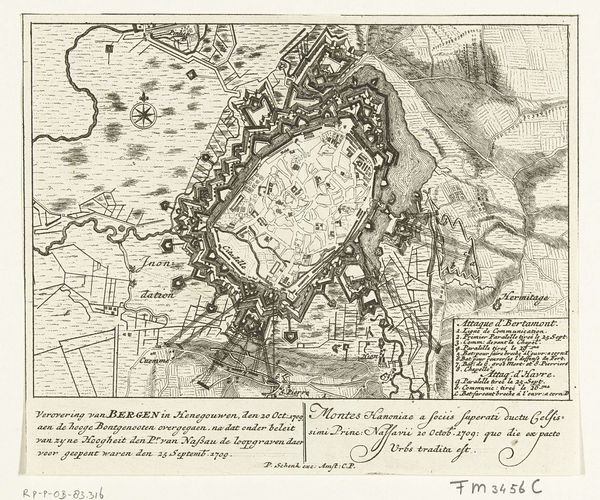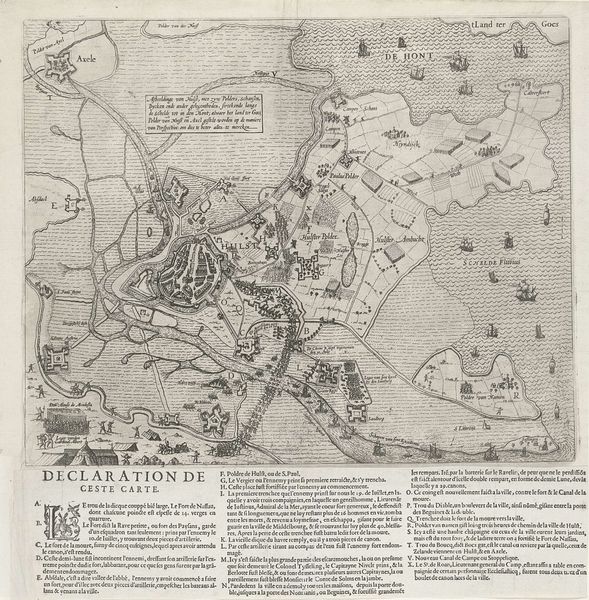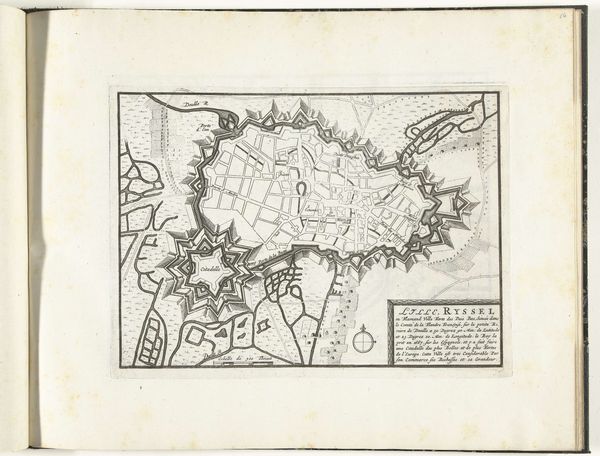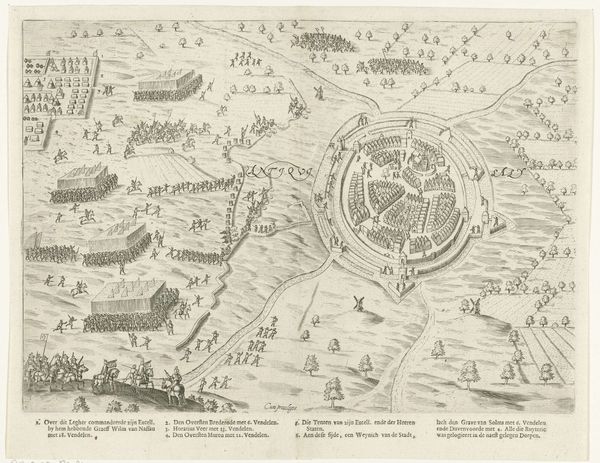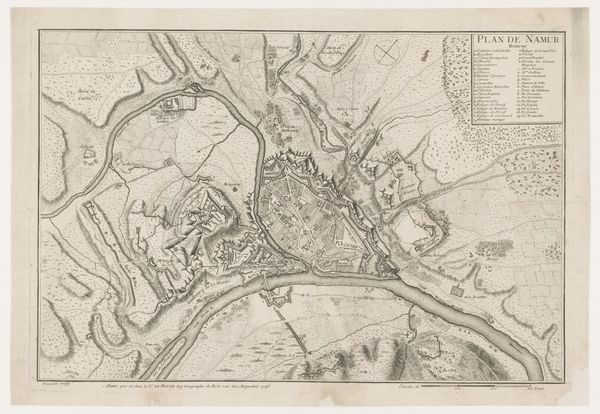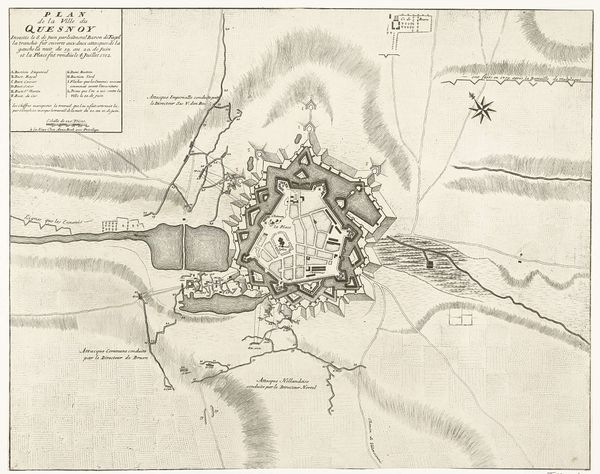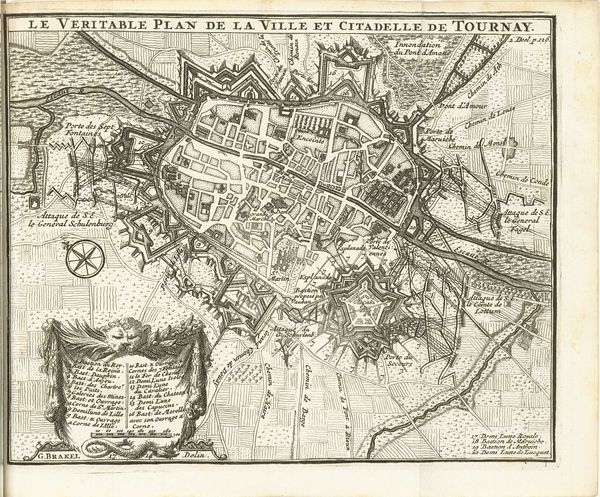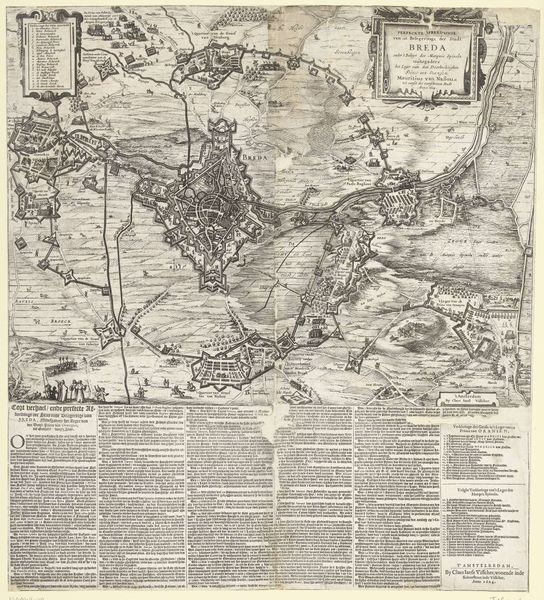
print, engraving
#
baroque
# print
#
old engraving style
#
geometric
#
cityscape
#
engraving
Dimensions: height 499 mm, width 598 mm
Copyright: Rijks Museum: Open Domain
Editor: This print, titled "Siege of Mons, 1709" is an engraving from between 1709 and 1720 by an anonymous artist and is currently held in the Rijksmuseum. I'm immediately struck by its level of detail – it's like looking at an incredibly intricate board game! How do you interpret this work in terms of its historical context? Curator: This isn't just a pretty picture, is it? It's a strategic tool, a piece of propaganda, a window into the brutal power dynamics of 18th-century Europe. Maps like this served not only to document military campaigns but to communicate and solidify power structures. How does understanding this print as a political object shift your perspective? Editor: Well, it makes me consider whose perspective this map reflects and whose it silences. I'm curious, could this also say something about national or political identities? Curator: Precisely! Maps, even seemingly objective ones, are never neutral. They reinforce existing power relations, defining who belongs and who is excluded. Consider how the very act of mapping territory asserts control. It is crucial to understand how map-making participates in colonial or imperial projects, right? The question is how do we read this map against the grain, teasing out the silences and erasures embedded within its visual language? Editor: So, by studying something as seemingly straightforward as a siege map, we can unpack complex narratives about power, identity, and even oppression? Curator: Absolutely! And how the artist's choices contribute to shaping public perception of the event itself. Looking at something as 'simple' as a Baroque print, can unravel critical questions. Understanding it requires an interdisciplinary lens, one that incorporates history, political science, and critical theory. Editor: I guess, that even something as innocuous as geometric representation can represent a story of colonial power. Thank you for providing some needed perspective! Curator: And thank you for bringing your keen eye to the conversation. Thinking critically is key, never accepting art's apparent story.
Comments
No comments
Be the first to comment and join the conversation on the ultimate creative platform.
